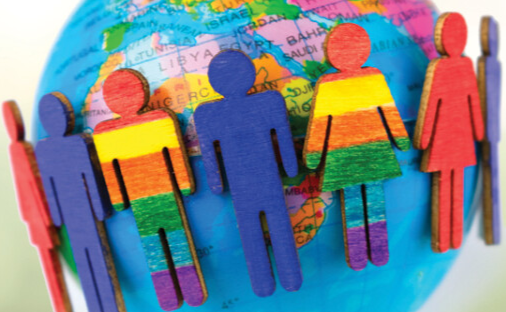
Are the French really the world’s best lovers, or is that just what the movies make us think? Does the old adage “No sex please, we’re British” still apply, or has the U.K. become a bit more “Ooh, Matron!” in a post-Victorian world? With almost every sex toy now being made in China, is it fair to assume that supposed Asian coyness around the subject of sex was just another lazy stereotype? What’s the difference between sex positivity and body positivity, and does either correlate with pleasure product sales figures?
The better we understand a given country’s attitude toward sex, the more pleasure products we can sell there. Let’s break that down a little.
Who’s shopping most for sex toys?
The United Kingdom’s “stiff upper lip” image notwithstanding, Europe as a whole enjoys a storied reputation as a hotbed of kink and iniquity. Indeed, many would argue that a quick Google search of the various types of German porn on offer provides all the proof necessary. Yet when it comes to metrics for sex positivity, Europe isn’t as far ahead of America as the hype might lead us to believe. True, Denmark leads the way with 118 yearly searches for sex toys per 1,000 internet users, but the U.S. isn’t far behind, suggesting that even if Americans are notoriously puritanical in reputation, they are less so in practice. The U.K. ranks fifth, which actually isn’t too bad considering our prudish rep globally. Bringing up the rear are India and Bangladesh, tied for last place with a paltry six yearly searches per 1,000 internet users — useful info if you’re trying to come up with a relevant ad campaign for your latest dildo.
Who is having the most sex and the best sex?
On the whole, folks in Asia wait a little longer to start having sex, on average losing their virginity at 21 years old, compared with 17 in North America and Europe, and 15 in Iceland. A study by the National Library of Medicine showed that the culture and religion in many East Asian countries encourages high levels of embarrassment about discussing sex in public or at all, leading to a more sexually conservative lifestyle. A Durex study found that Japan in particular reported the least sexual satisfaction of any country in the world, with a mere 34% of participants having sex weekly. This could be attributed to some of the longest reported working weeks in the world, potentially leaving citizens far too exhausted to try and maximize their own or their partners’ pleasure. By contrast, in the same survey, Nigerians reported the most excitement in their sex lives of any country in the world. This might surprise advertisers who previously associated such attitudes more with the supposedly sexually liberated French, Italians or Germans.
Who’s getting naked, but not in a sexy way?
Body positivity and sex positivity aren’t always bedfellows, and the statistics prove it. In the U.S., nudity and sex go hand in hand. Britain takes after the U.S. in this respect. In many European countries, however, casual nudity is a cultural norm that has very little to do with sex or pleasure. In places like Finland, Slovenia and many other countries, families and friends routinely sauna together. Yet while body positivity and sex positivity seem linked among Europeans, who get naked in a nonsexual way and also prioritize sexual pleasure, in other countries the two proclivities don’t necessarily go together. For example, folks in Central America, South America and Australia are all for nudity — but far less positive about sex than they are about the body itself.
What does all this mean for marketing pleasure products?
With such diverse attitudes around the world toward nudity, sex and pleasure products, how do we cater to everyone’s needs?
If you’re wondering whether culturally tailored marketing is worth the effort, the answer is yes. Just as one size most certainly does not fit all when it comes to sex toys, the same is true about how we advertise our products around the world. Study your target markets country by country, as forensically as the data allows, in order to inform exactly how you can make the most impact — especially since advertising pleasure products is so restricted in certain places, including the U.K. and the U.S.
After all, Brits may love a dirty pun in lieu of being explicit, but that kind of campaign won’t make an impact in places where puns are seen as lowbrow, or where the whole idea of coyness simply baffles those for whom sex has never been taboo. Looking at you and your exceptional sex education, Canada, the Netherlands and Denmark!
In order to sell our wares in the global market, we must first understand to whom we’re selling and how they feel about what they’re buying. We also need to realize that just because a country seems generally body positive doesn’t mean that everyone there views sex — and all its potential accouterments — with the same liberal attitude. When we think about selling pleasure products globally, it’s vital that we understand where our audience is coming from, country by country.
